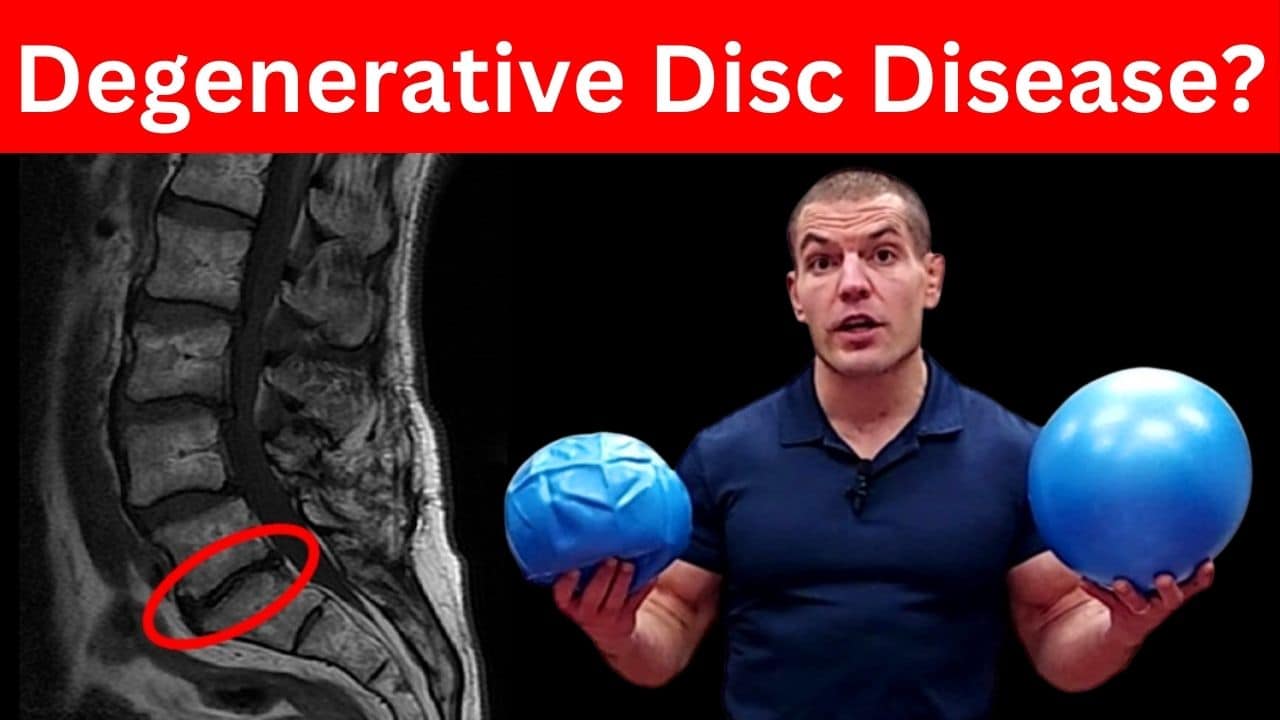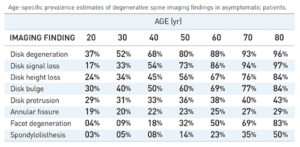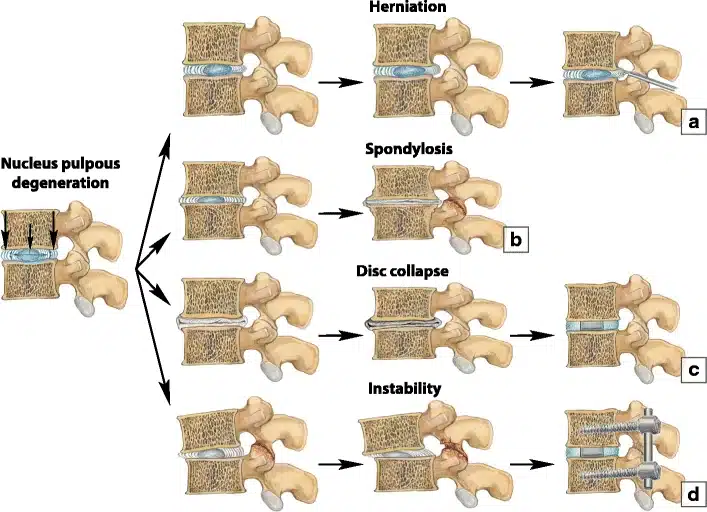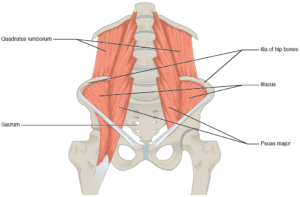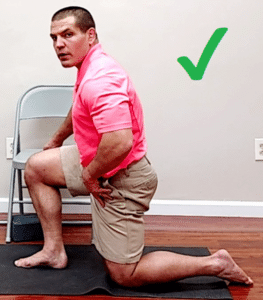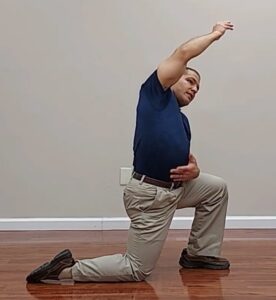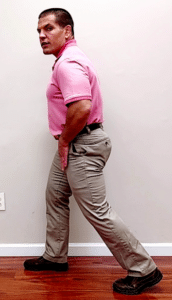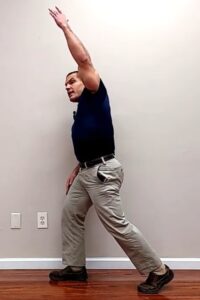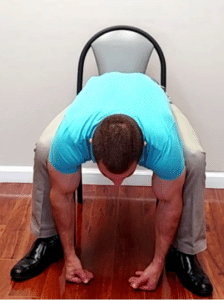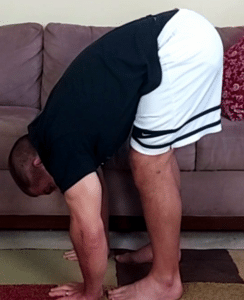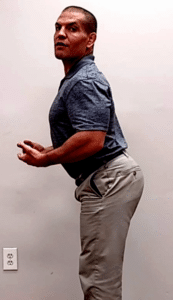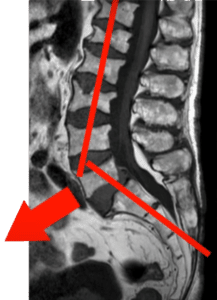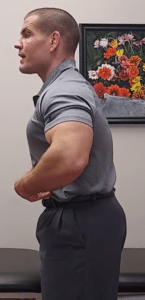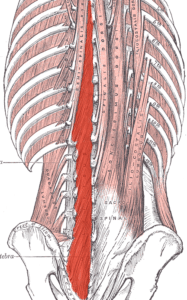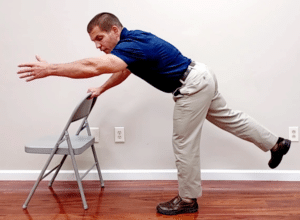Do You Have Degenerative Disc Disease In Your Lower Back?
If so, try these 4 exercises for degenerative discs in the lower back to relieve pain and improve mobility.

What Is Degenerative Disc Disease?
Before we get started into the exercise for degenerative discs in the lower back, it first helps to have an understanding as to what exactly degenerative disc disease is.
As you age, your discs naturally dry out and lose some water content.
This is very normal and common in adults.
Degenerative discs start appearing as young as your 20s and becoming increasingly more common as you age... both in people with and without pain.
So, if you have some degenerative discs on your MRI, don't get too worried about it. It doesn't necessarily mean that you're going to have to live in pain.
When your discs start to dry out, they shrink a little bit, losing some height.
They also become a little less firm, making your spine less stable.
Therefore, exercises for degenerative disc disease need to accomplish two things:
- resist compression of gravity pushing down on you
- resist sheer forces of one vertebra sliding forward on the other
4 Exercises For Degenerative Discs In Lower Back
The first two exercises for degenerative disc disease are going to resist compression, and the second two exercises are going to resist shear.
Exercise 1: Psoas and Quadratus Lumborum Stretch
The muscles most likely to compress the discs in your lower back are your hip flexor muscles, particularly the psoas, and your quadratus lumborum muscles.
These muscles can create massive compression forces on your lower back.
To stretch out the psoas and quadratus lumborum, start be kneeling on one knee.
Roll your pelvis underneath, push your hips forward until you feel a stretch in the front of your hip and thigh.
Raise the arm on the side that you're kneeling to stretch the quadratus lumborum.
Hold for 30 to 60 seconds per side.
The kneeling version of this exercise may not work for everyone though.
If you have degenerative discs in your lower back, it's quite possible that you may have other degenerative joint problems, such as knee arthritis.
If you have pain or difficulty kneeling, you can also do this exercise in standing.
Roll your pelvis under and push your hips forward to stretch the psoas.
Then raise one arm, and lean to the opposite side.
Exercise 2: Lower Back Forward Bending Stretch
The second exercise is to reverse the compressive forces of gravity.
Gravity pushes down on you all day long, thus compressing the discs in your lower back.
To reverse this, sit in a chair and lean forward as far as you can.
Allow gravity to stretch your spine.
Try to be fully relaxed, supporting yourself with your hands.
Alternatively, do it in standing bending fully forward.
Bending partially forward isn't good for your lower back because it causes shearing between your vertebrae.
However, when you bend all the way forward, it inverts your spine so that gravity is decompressing the discs in your lower back.
Exercise 3: Standing Pelvic Tilt
Prolonged standing is often one of the most painful activities for people with degenerative discs in their lower back.
When standing with your back arched, it can cause one vertebrae to slide forward on the one below it.
To prevent this, roll your pelvis underneath of you as shown below.
This helps stack your vertebrae and minimize shearing forces on the discs in your lower back.
Ideally, you want to do this exercise whenever you're standing.
So it's really more of a habit change rather than an "exercise" per se that you do for a certain number of reps or certain number of times per day.
Do it as often as you can remember to.
Exercise 4: Standing Bird Dog Exercise
The final exercise for degenerative discs in the lower back also helps resist shearing forces.
The muscles that help prevent shearing of one vertebrae on the other are called the multifidi.
One traditional exercises to strengthen the multifidi is the bird dog exercise.
However again, if you have trouble kneeling, this may not work for you.
If that's the case, you can do a standing bird dog exercise.
To do this, hold on to a chair and lift one leg and the opposite arm.
Keep your lower back flat so that it doesn't arch or rotate.
Hold for 10 seconds, and switch sides. Work up to 10 repetitions on each arm and leg.
Conclusion
Those were the four exercises for degenerative discs in your lower back.
If you need more help for lower back pain and live in the St. Louis area, we'd be happy to help you. Just tap the button below to request an appointment with one of our specialist physical therapists.
Like this post? Check out some of our other post about exercises for lower back pain
Things To Avoid With Degenerative Disc Disease & What To Do Instead
The 7 Best Core Strengthening Exercises For Lower Back Pain
3 Best Lower Back Strengthening Exercises For People Age 50+

